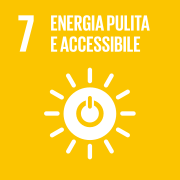
The energy transition today is one of the most complex and crucial priorities and challenges of our time. Reducing carbon emissions and accelerating the adoption of renewable sources is not just a goal, but a necessity imposed by the urgency of the climate crisis. However, the transition to a sustainable energy model requires technological tools capable of overcoming the limits of traditional solutions. It is in this context that new technologies emerge, capable of radically transforming the production, distribution and consumption of energy. Among these, hydrogen-powered fuel cells, high-temperature superconductors, perovskite photovoltaics, solid-state batteries and salt gradient energy stand out in particular.
Hydrogen Fuel Cells
Hydrogen-powered fuel cells are now considered one of the most promising tools for decarbonization, especially in those sectors that are most relevant in terms of emissions, such as heavy-duty transport and industry. Through a chemical reaction between hydrogen and oxygen, these cells generate electricity without CO₂ emissions, producing water as their only by-product. Their use is particularly relevant in the context of green hydrogen, obtained through electrolysis powered by renewable sources, which represents the future of this technology.
Eni, for example, has long been working to increase the use of hydrogen in its gas turbines. In fact, through the combustion of mixtures of hydrogen and natural gas, Enipower turbines can produce low-carbon electricity, demonstrating how this technology can be integrated into existing energy systems. Furthermore, fuel cells find an important application in the heavy-duty transport sector, thus offering a low-emission alternative where traditional batteries are not currently an efficient and viable solution.
High Temperature Superconductors
Among emerging technologies, another important role is played today by high-temperature superconductors, which represent a revolution for the entire electricity grid sector. Thanks to the ability to transport energy without resistance losses, these materials promise to eliminate the waste of electricity that today characterizes traditional systems. The widespread integration of superconductors in energy networks promises to favor a more efficient distribution and consequently to support the expansion of renewable sources by improving the stability of decentralized systems.
Especially in urban areas, their application could be particularly advantageous, making it possible to increase energy demand but without the use of solutions that imply infrastructure expansions.
Perovskite Photovoltaics
Another technology that is increasingly gaining ground is that of perovskite-based photovoltaics, a technological application of this material that is emerging as a concrete alternative to silicon, currently used in all solar panels. This technology offers greater efficiency in the conversion of light into electrical energy and can also be applied to flexible surfaces, such as windows or fabrics, thus making it possible to integrate solar energy into innovative contexts.
For many years, Eni has been promoting research and investing concretely in the development of perovskite solar cells, working on all those composite materials that combine perovskite precursors with new transparent polymers. This approach opens up new possibilities, for example, for agrivoltaics: a model that integrates energy production with agriculture, while reducing the impact on land use that photovoltaic systems in the field usually have. Perovskite, thanks to its reduced costs and versatility of application, could therefore accelerate the spread of solar energy and promote self-production of energy; enabling projects for the spread of energy from renewable sources.
Solid State Batteries
Solid state batteries today really represent a significant breakthrough compared to traditional lithium-ion batteries. Using solid electrolytes, these batteries guarantee a higher energy density, a longer life and a higher level of safety. These performance characteristics of solid state batteries make them particularly suitable for some application contexts, especially for energy storage and for the electrification of transport.
Their role today becomes crucial to address the challenges related to the variability of renewable sources, such as solar and wind, ensuring a stable supply of energy even in conditions of fluctuating demand. Although solid state batteries have not yet been adopted on a large scale by the major players in the energy sector, they could represent a complementary but very relevant solution to innovate energy storage systems.
Energy from the Salt Gradient
Another technology that is contributing to the acceleration of the energy transition is certainly that of salt gradient energy, today also known as “blue energy” or “osmotic energy”: a technology that exploits the difference in salt concentration between fresh water and sea water to generate electricity. This approach, still in the development phase, offers enormous potential for coastal areas and river deltas, where it could be easily integrated with other renewable sources.
Salt gradient energy is a sustainable technology that could find particular application in those geographical areas where the availability of fresh and salt water combines with a growing energy demand. For a company like Eni, for example, active in coastal and offshore contexts, this technology could develop a valuable opportunity to diversify the energy mix to further contribute to decarbonization. In fact, since 2020 Eni has started important research in this area thanks to a partnership with the Polytechnic University of Turin; inaugurating the MORE laboratory that carries out joint research with Eni for innovation in the marine renewable energy sector.
Technologies: From Emerging to Future Drivers of the Energy Transition
The technologies described therefore outline a trend that points to an energy future in which innovation and sustainability increasingly converge. In fact, hydrogen fuel cells, high-temperature superconductors, perovskite photovoltaics, solid-state batteries and salt gradient energy not only fully respond to the challenges of the energy transition but also offer solutions that in the long term will certainly be able to revolutionize and drive the entire renewable energy sector.
Several companies, in Italy and abroad, are engaged in the development of some of these technologies and, with their commitment to research and development, are helping to make these emerging solutions destined to become the future drivers of the energy transition. Thanks to the players in Italy and abroad who are focusing on these technological solutions, we will soon be able to expand the efficiency, effectiveness and options available to promote and accelerate the energy transition based on energy from renewable sources. Continuing on this path will be essential to address climate challenges and build a sustainable future for future generations.
















